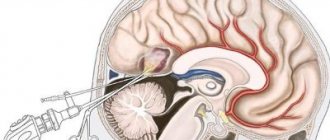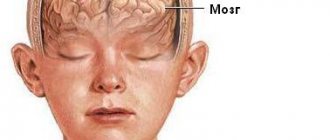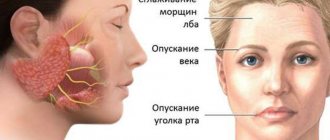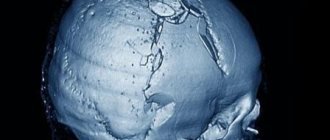Todd's palsy is a transient disorder of the central nervous system, which is expressed in paresis or plegia of one or two limbs that appears after an attack of epilepsy. Sometimes this is a symptom of a brain tumor. The disease can only be diagnosed with MRI or CT.
The disease was first diagnosed in 1855 by neurologist Benkley Todd. Due to the fact that status epilepticus can give several clinical manifestations of this condition at once, the disease has received several names at once, one of which will sound like post-epileptic paralysis.
Most often, this pathology is diagnosed in children, which is associated with the immaturity of the nervous system and the incomplete process of myelination of nerve fibers. The disease most often appears with secondary epilepsy, which is mainly caused by a brain tumor, and therefore these manifestations should cause special alertness of the oncologist. Also, the cause may be impaired blood circulation in the brain, which also requires mandatory hospitalization.
Definition
Todd's palsy is a transient condition that develops after an epileptic seizure. Patients experience paresis or paralysis of the limbs on one side or both. Such paralysis is the first warning of exhaustion of the nervous system and may be a symptom of cancer or metabolic disorders.
Paralysis can be diagnosed only after magnetic resonance imaging, which will rule out cerebral circulatory disorders and organic damage to nervous tissue. Additionally, the doctor may prescribe electroencephalography (EEG) to identify foci of epilepsy, Dopplerography of cerebral vessels, angiography and other tests.
If the cause of the seizures is not found, then treatment is reduced to stopping the epilepsy.
general information
Neurologist Benkley Todd in 1855 first described the condition after an epileptic attack, accompanied by motor dysfunction. Movement disorders of the limbs, which are transient after an attack of epilepsy, were later identified as a separate clinical syndrome.
In modern medical language, this syndrome is called “Todd’s palsy”, “post-epileptic paralysis”, “postictal paralysis”. Todd's palsy is quite common in children. This is explained by the immaturity of neurotransmitter mechanisms and the incomplete processes of myelination of children's nerve fibers.
When determining Todd's palsy, doctors differentiate between oncological diseases, since the syndrome manifests itself as a secondary disease in brain tumors accompanied by epileptic attacks. Cerebrovascular accidents may also be accompanied by motor disorders and epileptic seizures. If a patient experiences postictal palsy for the first time, he or she must be hospitalized immediately.
Causes
Todd's paralysis remains one of the medical mysteries. And without knowing the cause, doctors cannot develop a mechanism for dissociating the pathological process in order to cure it. Based on indirect evidence, doctors have several assumptions regarding the nature of the disease. According to the most progressive theory, the “phenomenon of inhibition of the nervous system” manifests itself in the form of paralysis. It is associated with impaired neurotransmitter transmission.
In addition, there are several other reasons:
- several epileptic seizures in a row; - brain exhaustion; - malignant neoplasm of the central nervous system; - inflammation of the brain substance, especially of viral etiology; — uncoupling of lipid metabolism; - presence of ischemic strokes in the past; - diseases of the heart and blood vessels.
There is debate about the provoking factors...
To date, the etiology of the syndrome is not clear; doctors have not been able to fully establish the causes of Todd’s paralysis.
Even the best medical research cannot change the outcome. Some doctors only assume that the source of this pathological symptom is inhibition processes in the central nervous system.
Other experts believe that the cause of the disease is neurotransmitter deficiency and depletion of cerebral functions.
Among the provoking factors are:
- status epilepticus, which is characterized by frequent seizures for 30 minutes;
- brain exhaustion;
- brain tumors;
- herpetic encephalitis;
- viral encephalitis;
- lipid metabolism disorder;
- decreased cholesterol levels in combination with increased triglyceride levels;
- ischemic heart diseases;
- ischemic diseases of the brain.
Symptoms
How does Todd's paralysis manifest itself? The symptoms initially resemble those of an epileptic seizure. For those around you, watching an attack can be quite difficult, since they have no opportunity to help the patient. But even after the cramps end, the person cannot fall asleep and experience blissful oblivion. On the contrary, he freezes and cannot move his arms and legs.
How long will Todd's paralysis last? Symptoms (photos of patients can be traumatic and are considered unethical) sometimes persist around the meshes or more. Doctors most often note the appearance of unilateral paralysis or paresis. Over time, the motor blockade passes without leaving any consequences. Medical periodicals record cases of Todd's paralysis with visual and articulation impairments.
At the first encounter with this pathology, the symptoms can be regarded as manifestations of a stroke, but after all the necessary diagnostic measures have been carried out, the primary diagnosis is removed, and the rapid regression of symptoms confirms the version of paralysis.
Signs and symptoms
Todd's palsy is a heterogeneous clinical syndrome encompassing a variety of unilateral focal neurological deficits that occur on the side of the body opposite the site of the seizure, for example:
- paresis;
- aphasia;
- gaze paralysis;
- sensory disturbances.
These clinical signs appear immediately after the attack, and most episodes of Todd's palsy are short-lived, with one study finding that clinical signs lasted an average of approximately three minutes. The duration may be longer in patients with tonic-clonic generalized seizures compared to patients with focal seizures.
This contrasts with seizures after stroke, which demonstrate focal neurological defects of long duration, depending on the severity of the stroke. Indeed, in patients with Todd's palsy, ongoing focal neurological deficits exceeding a few minutes usually indicate the presence of focal brain damage as the underlying etiology of the seizures or persistent nonconvulsive seizures.
Diagnostics
What should be done to confirm Todd's paralysis? The signs of the disease are quite vague. It is necessary to exclude all other pathologies to be sure of the diagnosis. The first step is to determine the severity of the observed condition and the level of muscle paralysis. To do this, conduct a physical examination and compare the data obtained with a five-point scale:
- Five points means a complete absence of symptoms, the patient’s muscles are in a state of physiological norm.
- Four points – strength indicators are slightly reduced, but the activity of the limbs is still maintained. The patient calmly overcomes the resistance of the doctor's hand.
- Three points - stiffness of the victim’s muscles is noticeable to the naked eye, but the patient is still able to make voluntary movements, although not as quickly as with four points. It becomes more difficult to overcome the resistance of the doctor's hand.
- Two points - the Earth's gravity becomes an insurmountable obstacle for such a patient.
- One point – complete muscle paralysis is observed.
After the examination, the doctor collects a thorough history from the patient’s relatives, studies the medical record, and prescribes a computed tomography or magnetic resonance imaging scan. To exclude a stroke, the patient undergoes angiography to identify the focus of epilepsy (if there is a history of one), and electroencephalography is prescribed. To determine concomitant pathologies, ultrasound examination of the heart and electrocardiography are performed.
Only having all the results, the doctor can choose the most probable one among all the possible diagnoses and begin therapy.
Treatment of infantile paralysis
If the pathology manifests itself in children, treatment with psychoactive drugs is not carried out due to the weakness of the children's nervous system. In this case, the disease is caused by a disorder of lipid metabolism, so treatment is carried out with the help of drugs that improve metabolic processes in the body.
If a child’s disease is due to a genetic predisposition, and one of the parents is also susceptible to Todd’s paresis, drug therapy is often not prescribed.
Treatment
How can Todd's paralysis be reversed? The treatment, although purely symptomatic, has low effectiveness, since it is difficult to accurately establish the cause of this condition. Therapy depends on the level and severity of paralysis.
If movement disorders are minor, then specific treatment is not required. The symptoms will go away on their own within a few hours or days. For more profound disorders, benzodiazepine drugs are used, such as Midazolam, Diazepam, Lorazepam, Fosphenytoin or Phenytoin. Each of them stops convulsive attacks and their consequences. When prescribing them, it is necessary to remember that abrupt withdrawal of antiepileptic drugs can also provoke an attack.
There are contraindications for prescribing these drugs. First of all, this is, of course, intolerance to the components of the drug, as well as a history of closed-angle glaucoma and drug or alcohol addiction. In addition, renal function plays an important role, since the drug is mainly excreted in the urine.
Treatment for Todd's Palsy
In the treatment of postictal paralysis, the basis is the prescription of antiepileptic drugs - anticonvulsants. With their help, they stop and reduce the frequency of epileptic seizures. The drugs are prescribed only by an epileptologist - phenytoin, diazepam, lorazepam, valproic acid. Diseases of internal organs and metabolic disorders require medication treatment and correction.
If CNS diseases are not detected, additional treatment for paralysis is not performed. For hydrocephalus, diuretics and drugs containing potassium are prescribed. If tumors are detected on CT and MRI images, a consultation with a neurosurgeon is necessary to consider surgical treatment.
You can undergo an MRI examination at one of the Moscow clinics. More than a hundred medical centers are offered by the service. Each clinic card contains information about the address, rating of the institution, equipment used, cost of the procedure and availability. Thanks to the filters on the website, the patient can find a clinic open 24 hours a day and undergo an urgent examination. Appointments are made free of charge and by telephone.
Prevention
There is no way to prevent Todd's post-seizure paralysis. This condition has not yet been fully studied, so specific prevention, as well as treatment, cannot be developed. Perhaps some time later, when the capabilities of medicine become even greater, we will be able to take some steps to eliminate this pathology.
Today, doctors give very vague advice, such as maintaining a healthy lifestyle, proper nutrition, giving up bad habits and moderate physical activity. In addition, you should not forget about periodic preventive examinations, because any disease is easier to prevent than to treat.
Therapy
Treatment largely depends on the severity of the symptoms of paralysis. For mild symptoms that go away on their own after a short period of time, drug therapy is not used.
For severe symptoms, treatment is with a benzodiazepine. This is a substance from the group of psychoactive drugs that acts on gamma-aminobutyric acid receptors. The medicine has the following effects:
- muscle relaxation;
- anticonvulsant effect;
- sedative effect;
- relieves increased anxiety.
Treatment of Todd's palsy with this drug is due to an unknown cause of the pathology. Drugs containing benzodiazepines have a pronounced therapeutic effect and help to quickly relieve symptoms when used regularly, but this method will not completely get rid of the problem. However, patients respond well to this treatment, noting a decrease in the intensity of paresis.
Drugs for the treatment of pathology have a number of contraindications:
- glaucoma;
- alcohol addiction;
- addiction;
- liver or kidney dysfunction;
- individual intolerance.
When choosing treatment, it should be remembered that psychoactive drugs are potent drugs and often have a withdrawal syndrome.
Forecast
Todd's palsy can have a good or bad prognosis. It all depends on the severity of neurological symptoms and the duration of paresis or paralysis. If a neurologist gives a rating of “three” or “four” on a five-point scale, then in this case the disease does not cause significant concern, and the prognosis for life and health is favorable. The body quickly recovers after attacks; the condition does not require drug intervention.
If the paralysis lasts a long time, the functions of the limbs are restored for a long time, and the number of attacks becomes more frequent over time, then the prognosis for life is, of course, unfavorable.
Diagnostic criteria
Modern doctors are equipped with a wide range of different techniques designed to accurately diagnose almost any disease. Diagnosis begins with a test, according to which the attending physician determines the degree of muscle damage in scores.
Muscle immobilization is assessed on a five-point scale:
- 5 points - the patient has no paralysis, no muscle weakness is observed;
- 4 points - the patient has not lost motor activity, but muscle strength decreases, the person is able to resist the movements of the doctor’s hand;
- 3 points - the victim’s movements are constrained, but the patient can move, overcoming gravitational forces.
- 2 points - motor activity is weak, the patient cannot overcome the gravity of the Earth;
- 1 point - minimal physical activity;
- 0 points - the patient is completely paralyzed, there is no movement.
After studying the test results, the doctor begins to examine the patient’s medical history.
Further diagnosis is based on the following methods:
- CT scan of the brain . Allows you to detect early hemorrhages and the presence of a stroke.
- MRI or MRA . Study of the state of cerebral vessels.
- Cerebral angiography . A method of examining brain vessels in which a contrast agent is injected into the vessels.
- ECG . A method for studying the functioning of the heart in normal and pathological conditions.
- EchoCG . A technique for visualizing the state of cardiac tissues and clans.
- EEG . An examination to determine electrical brain activity.
After a complete examination, the attending physician is able to make an accurate diagnosis and prescribe the correct treatment for the disease.
Latest research
Right- and left-sided Todd's palsy can progress, and over time muscle weakness remains, even after long-term treatment. For such patients, as well as other paralyzed people, science has a couple of revolutionary ideas to offer. The first of these is the creation of prosthetics. Today, there are prototypes of bionic limbs controlled by the power of thought, that is, the device connects to the nervous system and perceives nerve impulses, deciphering the signals.
The second method is rather biological. It is based on the restoration of nerve endings using stem cells. Since they have a tendency to almost endless division, and can also differentiate into any cell of the human body. Experiments are currently being carried out on laboratory animals, but if they are successful, one can hope for a significant breakthrough in the treatment of neurological diseases.
Symptoms in children
Todd's palsy in children has some differences from the manifestation of the same pathology in adults. This is due to the peculiarity of the fragile children's nervous system.
As a rule, epileptic seizures in childhood are more intense than in adults, which is due to the instability of the processes of inhibition and excitation of the nervous system due to incompletely formed metabolism. Therefore, Todd's paresis in childhood is expressed more clearly than in adults. However, in this case, the neurological symptoms disappear on their own after 24-48 hours.









